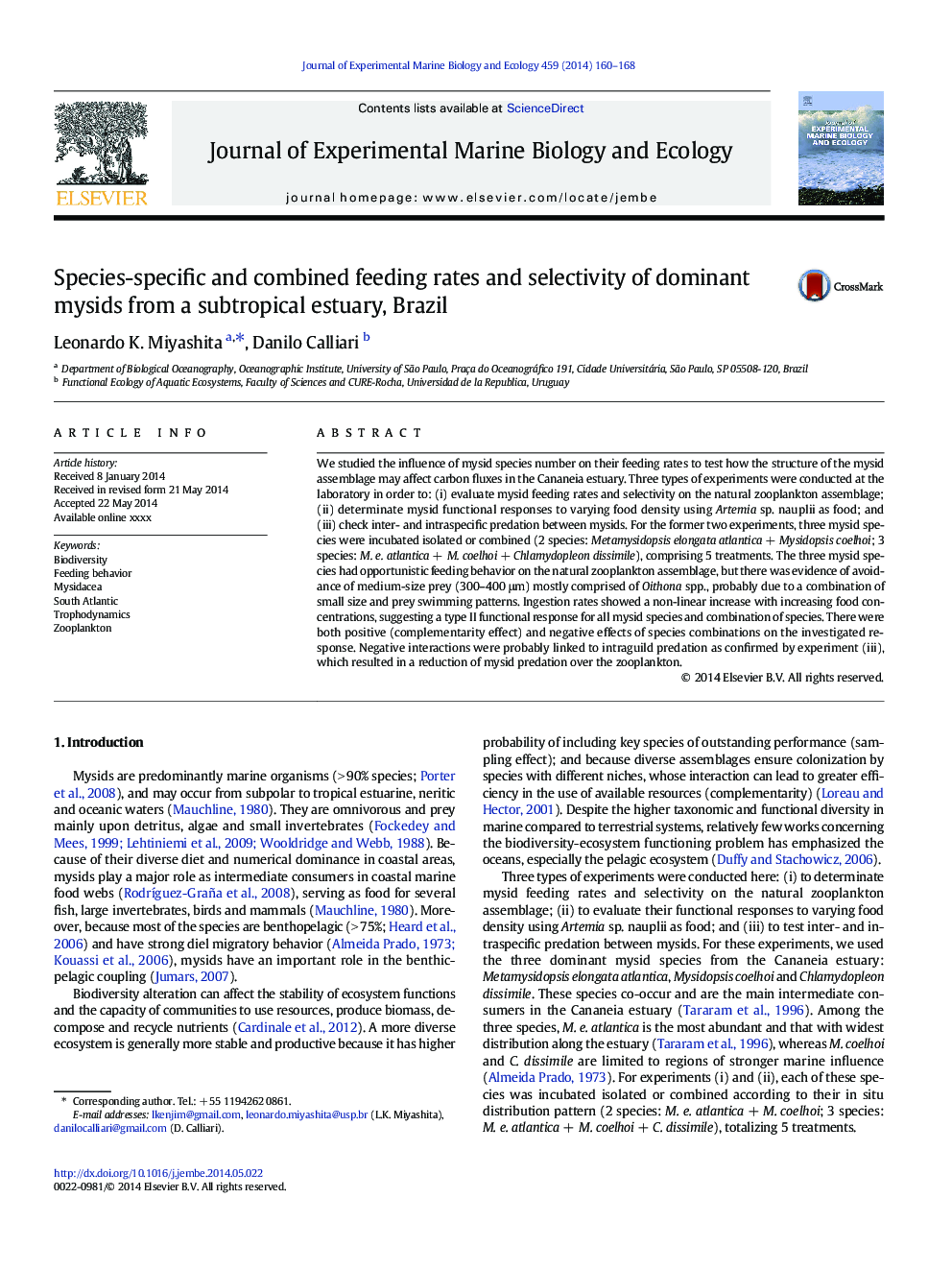| کد مقاله | کد نشریه | سال انتشار | مقاله انگلیسی | نسخه تمام متن |
|---|---|---|---|---|
| 6304126 | 1618416 | 2014 | 9 صفحه PDF | دانلود رایگان |
عنوان انگلیسی مقاله ISI
Species-specific and combined feeding rates and selectivity of dominant mysids from a subtropical estuary, Brazil
ترجمه فارسی عنوان
میزان تغذیه ویژه و ترکیب ترکیبی و انتخابی مسیح های غالب از یک رودخانه نیمه گرمسیری، برزیل
دانلود مقاله + سفارش ترجمه
دانلود مقاله ISI انگلیسی
رایگان برای ایرانیان
کلمات کلیدی
تنوع زیستی، رفتار تغذیه، میسوداسیا، اقیانوس اطلس، تروپودینامیک، زئوپلانکتون،
موضوعات مرتبط
علوم زیستی و بیوفناوری
علوم کشاورزی و بیولوژیک
علوم آبزیان
چکیده انگلیسی
We studied the influence of mysid species number on their feeding rates to test how the structure of the mysid assemblage may affect carbon fluxes in the Cananeia estuary. Three types of experiments were conducted at the laboratory in order to: (i) evaluate mysid feeding rates and selectivity on the natural zooplankton assemblage; (ii) determinate mysid functional responses to varying food density using Artemia sp. nauplii as food; and (iii) check inter- and intraspecific predation between mysids. For the former two experiments, three mysid species were incubated isolated or combined (2 species: Metamysidopsis elongata atlantica + Mysidopsis coelhoi; 3 species: M. e. atlantica + M. coelhoi + Chlamydopleon dissimile), comprising 5 treatments. The three mysid species had opportunistic feeding behavior on the natural zooplankton assemblage, but there was evidence of avoidance of medium-size prey (300-400 μm) mostly comprised of Oithona spp., probably due to a combination of small size and prey swimming patterns. Ingestion rates showed a non-linear increase with increasing food concentrations, suggesting a type II functional response for all mysid species and combination of species. There were both positive (complementarity effect) and negative effects of species combinations on the investigated response. Negative interactions were probably linked to intraguild predation as confirmed by experiment (iii), which resulted in a reduction of mysid predation over the zooplankton.
ناشر
Database: Elsevier - ScienceDirect (ساینس دایرکت)
Journal: Journal of Experimental Marine Biology and Ecology - Volume 459, October 2014, Pages 160-168
Journal: Journal of Experimental Marine Biology and Ecology - Volume 459, October 2014, Pages 160-168
نویسندگان
Leonardo K. Miyashita, Danilo Calliari,
